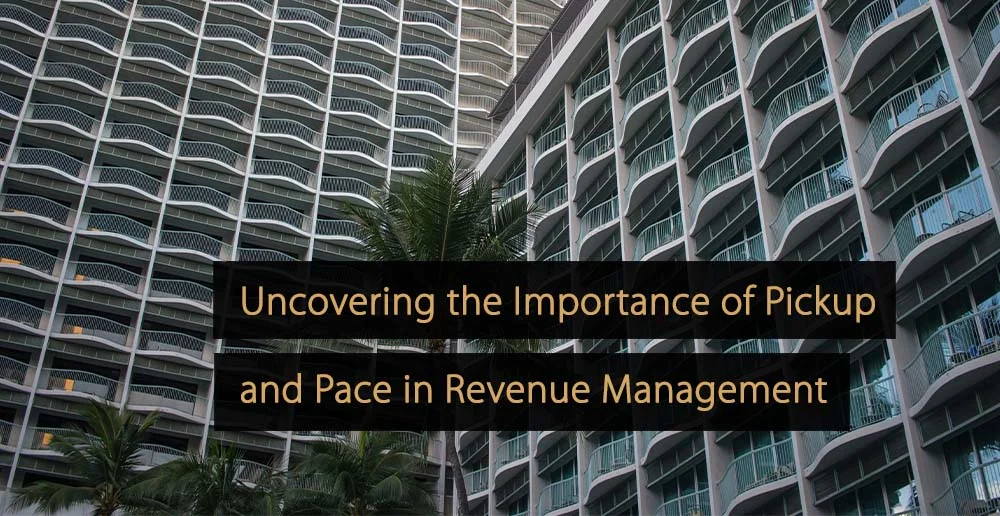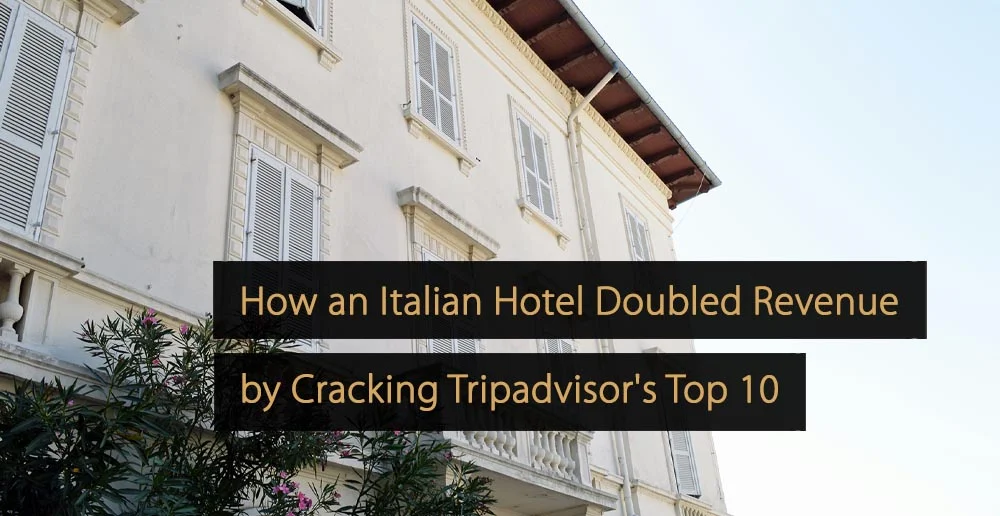As a revenue manager, one of your essential daily inquiries is, “What was yesterday’s pickup?” It’s a question that sets the tone for your day and helps you make informed decisions about selling the right room, to the right guest, at the right time, at the right price. Setting the correct room price is undoubtedly the cornerstone of revenue management, how you arrive at the optimal price point requires a considerable amount of context, of which pickup and place play a critical role.
What are Pickup and Pace in the Context of Revenue Management?
Pickup refers to the number of rooms booked for a specific date range, from a specified date.
For example: ‘For this upcoming Friday, we’ve booked 23 room nights over the past seven days‘. In this scenario, Friday is the date range we are analyzing, seven days previous is our ‘from date’, and 23 room nights is the pickup.
It measures the number of new bookings, cancellations, reservation changes, and group booking adjustments.
Booking pace, however, refers to the rate at which these bookings materialize for each respective date. The booking pace provides good insight into the likely demand, occupancy, and revenue generated for a particular period.
By analyzing pickup and pace, revenue managers gain valuable insights into their clientele’s booking patterns and behaviors. Comparing these metrics to the same period in the past allows you to gauge whether your occupancy rate is on track or lagging behind.
This information is useful in measuring your performance and shaping your strategies to optimize room revenue for specific future dates or periods.
With a comprehensive understanding of your guests’ booking behavior, you can make more informed decisions about pricing, promotions, and other revenue management tactics to ensure peak profitability.
Why are Pickup and Pace Metrics of Value to Hotel Revenue Managers?
Monitoring your pickup and pace provides valuable insights into booking trends and patterns, allowing you to anticipate when your hotel will likely reach full occupancy and whether your revenue aligns with your forecasts.
Reviewing daily pickup data empowers revenue managers to make strategic pricing decisions and adjust distribution channels, promotions, and restrictions accordingly.
Within the wider commercial team, sales can monitor booking performance against previous years and identify underperforming partnerships, while marketing can stimulate demand. Neglecting to check the pickup report for future dates risks selling rooms below their optimal price, resulting in lost bookings and revenue to competitors.
The benefits of monitoring pickup and pace also extend beyond your commercial department. Other business areas, such as operations, food and beverage, procurement, and housekeeping, can use this information to plan and prepare for the selected period.
To fully leverage the benefits of pickup and pace, you must delve deeper into the data and extract meaningful insights that inform their decision-making.
Unpacking Pickup and Pace Data for Enhanced Insights
Segmentation is a way of dividing potential guests into groups based on a set of common characteristics and behaviors. These categories might include factors such as whether they are part of a group or transient, and whether their purpose of travel is for business or leisure.
By analyzing pickup and pace data that is broken down into segments, you can uncover essential insights into your business’ performance which you can then use to adjust your tactics.
For example, you can easily determine whether a particular segment is performing well or where the sudden spike in cancelations is coming from. You can see what kind of impact it may have on your net pace and initiate mitigation measures.
Taking Action at Your Hotel with Pickup and Pace Data
Segmenting data by length of stay or channel can provide valuable insights into booking patterns and guest origins, allowing revenue managers to target the right customer profile with the appropriate offer. Additionally, this data can trigger a PPC promotion to an underperforming source market with a suitable special offer or price incentive.
Room type segmentation enables revenue managers to evaluate the performance of different room categories and make necessary adjustments. By analyzing the data, you may discover that a specific rate performs better than others or that a particular room type is slower than in previous years.
Seasonality, events, and day of the week are other factors that can impact booking pace. Understanding these patterns and historical performance by day of the week can help implement appropriate selling strategies to maximize room revenue for a specific DOA.
Comparing the booking pace of current reservations with historical averages on the same week last year, same day last year, or same time last year can help determine if bookings are on track or falling behind.
Comparing pickup to market benchmarks can also provide insights into how your property performs relative to its competitors.
It may be the case that your property sees stronger weekend business than a weekday. By analyzing pace data by day of the week, revenue managers can determine whether their pricing strategy for slower days is impacting overall profitability.
Additionally, while your overall booking pace may show that your occupancy is tracking similarly to a previous moment in time, breaking down pace analysis by room type can uncover differences in performance.
It would be easy to assume that if you are tracking ahead on previous years for a particular stay date, you have some wiggle room to raise your Best Available Rate (BAR) for all room types. However, by breaking down your room type performance, you may find that the mix is different and your lower category rooms are outperforming previous years, and your higher category rooms are trailing behind. Increasing your lowest rate might throttle pickup for that date, while adjusting your strategy for your higher category rooms could stimulate pickup in that category.
Unique events also play a crucial role in driving demand and pickup, and monitoring trends around these through a pace chart can uncover shifts in patterns that may help better manage rate tactics. This is especially important in the post-pandemic era when booking lead times have shifted.
Together, these layers of analysis provide a comprehensive narrative of your property’s performance so you can tailor your pricing and distribution strategy to capitalize on opportunities and mitigate potential weaknesses.
Getting the Most out of Pickup and Pace Data with a Business Intelligence Solution
Using your pickup and pace data effectively starts with having it ready and available when needed.
A tool like Business Intelligence by Lighthouse enables you to make data-driven decisions by tracking pickup performance, comparing it to historical data, and drilling down into various segments.
This means you can easily view all relevant information in one place, identify segments impacting pace, and instantly spot opportunities for deeper analysis.
With a click of a button, you can also instantly identify areas of over or underperformance, and track these trends over time to target specific segments and improve your revenue.
As you can see, pickup and pace data is crucial to the success of hotel revenue management, and at the heart of analyzing this data is a business intelligence solution that seamlessly brings this data to the surface via clearly visualized, actionable insights.
Whitepaper: Predicting Hotel Demand with Short-Term Rental Data
This whitepaper will show you how to identify changes in short-term rental demand and adjust your pricing and marketing strategy for the appropriate periods ahead of your competition to accelerate growth.
Click here to download the whitepaper “Predicting Hotel Demand with Short-Term Rental Data”.
More Tips to Grow Your Business
Revfine.com is the leading knowledge platform for the hospitality and travel industry. Professionals use our insights, strategies, and actionable tips to get inspired, optimize revenue, innovate processes, and improve customer experience.Explore expert advice on management, marketing, revenue management, operations, software, and technology in our dedicated Hotel, Hospitality, and Travel & Tourism categories.








Leave A Comment